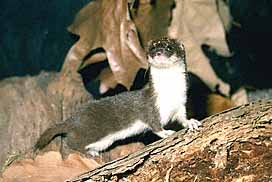Vertebrate Biology
Biol 374/374L
 I teach both Vertebrate Biology Lecture and Laboratory. Go here to see an example lecture syllabus and here to see an example lab syllabus.
I teach both Vertebrate Biology Lecture and Laboratory. Go here to see an example lecture syllabus and here to see an example lab syllabus.
Vertebrates are often the most abundant and conspicuous part of our experience of the natural world. Typically, when people are asked to provide an example of a wild animal they name a vertebrate. In lecture we use a comparative approach to explore the diversity of vertebrates, the characteristics that define each vertebrate taxa, and how those characteristics relate to each group’s evolution. Much of the course is concerned with principles of systematic biology, factors governing vertebrate distribution, methods used by vertebrates to solve environmental problems, inter- and intraspecific interactions, reproduction, life history and the conservation biology of vertebrates. Biology 141 and 142 (General Biology) are prerequisites for this course.
 The laboratory course combines the study of preserved specimens in the laboratory with field trips and field studies to teach students identification, taxonomic relationships and natural history of representative vertebrate species. Our focus will be primarily on those vertebrates found in northeastern Pennsylvania. Field trips are planned to observe vertebrates in the wild, in captivity (Nay Aug Park, Philadelphia Zoo) and as museum specimens (Everhart Museum, possibly Philadelphia Academy of Natural Sciences). Students will also conduct field research projects to better understand the behavioral ecology and ecophysiology of selected vertebrates.
The laboratory course combines the study of preserved specimens in the laboratory with field trips and field studies to teach students identification, taxonomic relationships and natural history of representative vertebrate species. Our focus will be primarily on those vertebrates found in northeastern Pennsylvania. Field trips are planned to observe vertebrates in the wild, in captivity (Nay Aug Park, Philadelphia Zoo) and as museum specimens (Everhart Museum, possibly Philadelphia Academy of Natural Sciences). Students will also conduct field research projects to better understand the behavioral ecology and ecophysiology of selected vertebrates.
Dr. Robert J. Smith
Contact Us:
- Dr. Robert J. Smith
- Department of Biology
- Loyola Science Center 252
- Scranton, PA 18510
- The University of Scranton
- Phone: (570) 941-6581
- robert.smith@scranton.edu